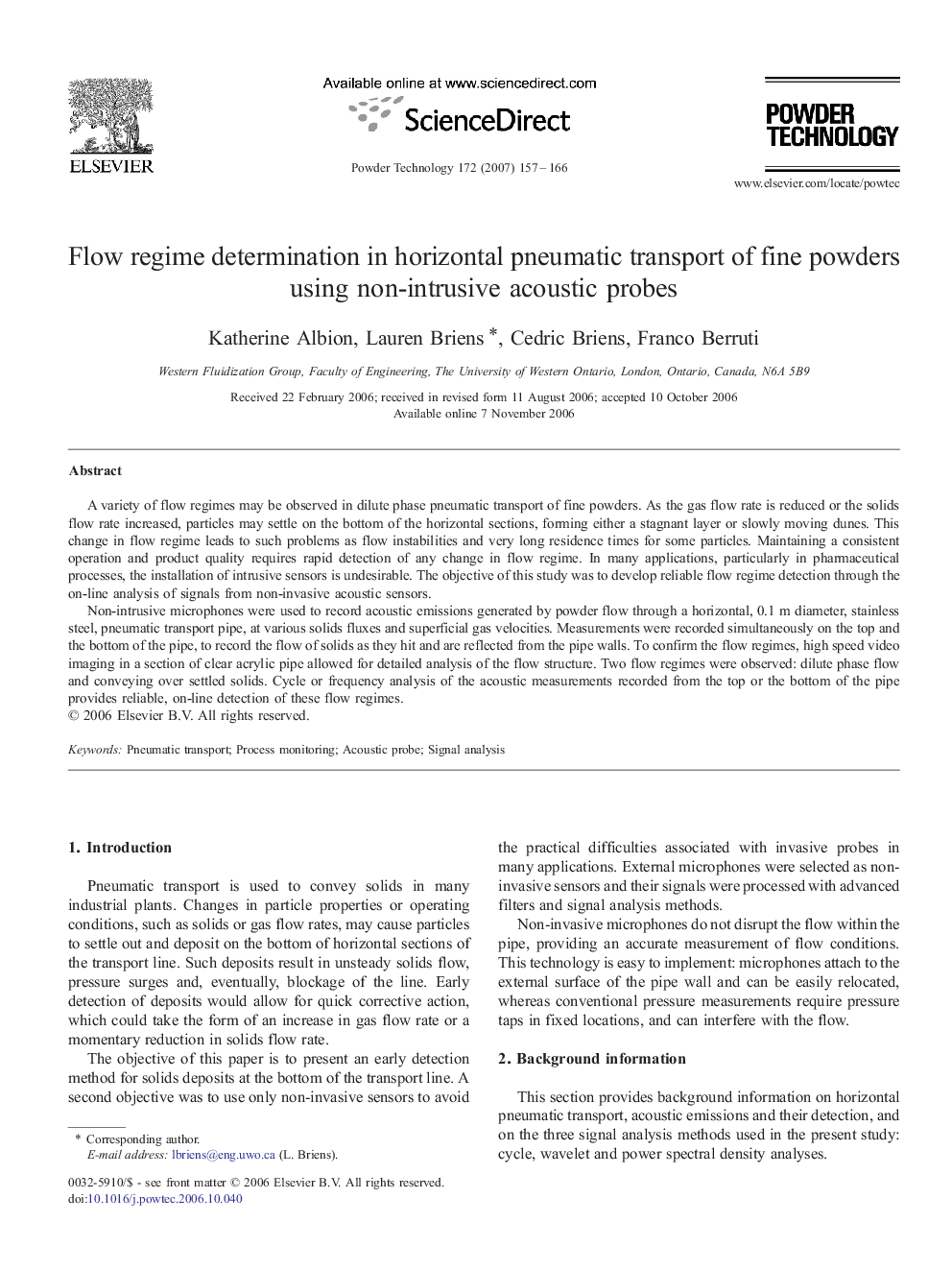| Article ID | Journal | Published Year | Pages | File Type |
|---|---|---|---|---|
| 239218 | Powder Technology | 2007 | 10 Pages |
A variety of flow regimes may be observed in dilute phase pneumatic transport of fine powders. As the gas flow rate is reduced or the solids flow rate increased, particles may settle on the bottom of the horizontal sections, forming either a stagnant layer or slowly moving dunes. This change in flow regime leads to such problems as flow instabilities and very long residence times for some particles. Maintaining a consistent operation and product quality requires rapid detection of any change in flow regime. In many applications, particularly in pharmaceutical processes, the installation of intrusive sensors is undesirable. The objective of this study was to develop reliable flow regime detection through the on-line analysis of signals from non-invasive acoustic sensors.Non-intrusive microphones were used to record acoustic emissions generated by powder flow through a horizontal, 0.1 m diameter, stainless steel, pneumatic transport pipe, at various solids fluxes and superficial gas velocities. Measurements were recorded simultaneously on the top and the bottom of the pipe, to record the flow of solids as they hit and are reflected from the pipe walls. To confirm the flow regimes, high speed video imaging in a section of clear acrylic pipe allowed for detailed analysis of the flow structure. Two flow regimes were observed: dilute phase flow and conveying over settled solids. Cycle or frequency analysis of the acoustic measurements recorded from the top or the bottom of the pipe provides reliable, on-line detection of these flow regimes.
Graphical abstractNon-intrusive microphones were used to record acoustic emissions generated by powder flow in a horizontal, pneumatic transport pipe, at various solids fluxes and superficial gas velocities. Two flow regimes were observed: dilute phase flow and conveying over settled solids. Cycle analysis of the acoustic measurements recorded provides reliable, on-line detection of these flow regimes.Figure optionsDownload full-size imageDownload as PowerPoint slide
